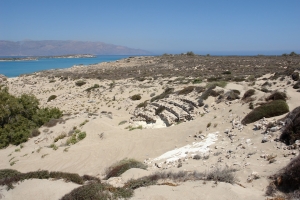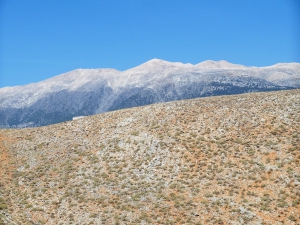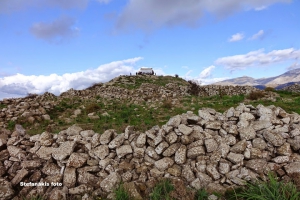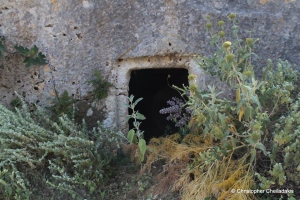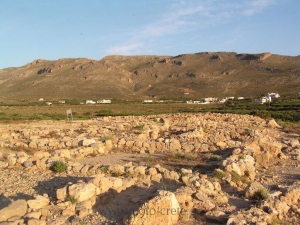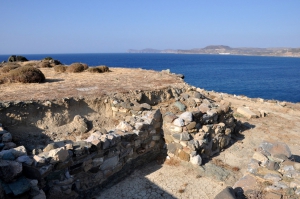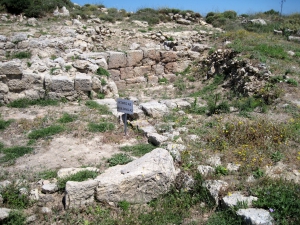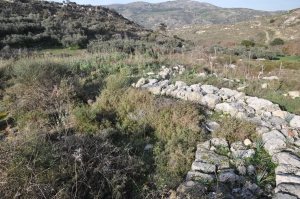Koufonissi was an economic and cultural center from the Minoan until the Greco-Roman Times and was claimed by all major cities of the region. As recorded on the inscription of the Magnites currently embeded on the facade of the Toplou monastery church, there was a great dispute between Itanos and Ierapytna about Lefki island. In 132BAD the island was owned by Itanos.
Near the site of the current temple of Agia Ekaterini, above Loutro, traces of walls and buildings have been identified, belonging to the Ancient town of Anopolis, port of which was Katopoli or Phoenix, currently located in Loutro. Anopolis was an independent town and had its own currency.
Ancient Arcadia or Arcades was a town that is believed to have been built near the village Afrati. Archaeological excavations in 1924 unearthed an ancient houses and necropolis of the 7th-9th centuries BC with vaulted tombs.
Above the scenic village of Trialonia, Kissamos district, and a little on the east, we meet the hill of Kefala. Kefala has views to all surrounding areas and hides a truly unknown treasure, a huge archaeological site which has not been protected by the Greek State and is still being destroyed.
Above the beach of Gerontolakkos, at position Farmakokefalo, the archaeologist P. Papadakis in 1984 found the remains of the Hellenistic city Ambelos. Excavations revealed a prosperous city with massive walls, houses and distinct roads.
The archaeological site of Trypitos is located on a small peninsula, 3km east of Sitia, near the beach Karavopetra, which has stunning view to Sitia city. It is considered to be the ancient city of Sitia, Itia, which was originally the port of Praesus. The city flourished in the Hellenistic period (350BC-50BC).
Sivrytos (Sibryta) is an ancient town built on the hill Kefala near the current villages Thronos and Agia Fotini. It was founded during the dark years of ancient Crete, after the destruction of the Minoan civilization (1200BC) when the desperate Minoans founded cities in the most inhospitable and inaccessible peaks of the Cretan mountains, but flourished mainly in the Greco-Roman times.
The ancient town Falanna was located at the position of the abandoned settle Onithe, near Goulediana. It covers a large plateau in a naturally fortified site. The first use of the site is dated in the Neolithic Age, but the town flourished during the archaic times (7-6th century BC). It was a small town depended on city Rithimna.











